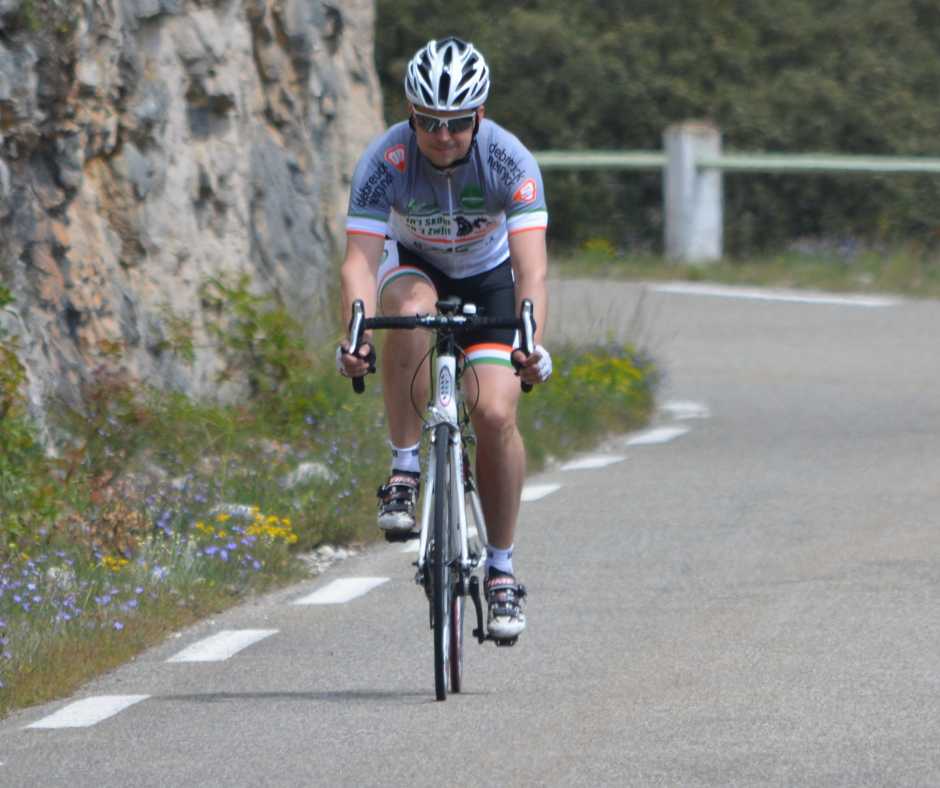Cycling Stamina with Proper Nutrition, Training, and Recovery Techniques for every cyclist!
Are you looking to improve your cycling stamina? Look no further! This comprehensive guide provides tips and techniques on proper nutrition, training methods, and recovery strategies to help you build endurance and stamina for cycling. Learn about the importance of consistency and gradual progression, common mistakes to avoid, and solutions to overcome them.
Cycling is not just a sport; it’s a journey that pushes your physical and mental limits. Whether you’re a seasoned cyclist or just starting, building endurance is crucial for achieving your cycling goals. In this comprehensive guide, we will explore the key elements of mastering endurance – from proper nutrition to effective training and recovery techniques.
Importance of Endurance in Cycling
Endurance is the backbone of cycling performance. It’s the factor that enables you to push through fatigue, tackle ascents, and enjoy the ride for extended periods. Whether you’re aiming for a leisurely weekend ride or preparing for a competitive race, building cycling stamina is essential.
A well-developed endurance capacity not only enhances your ability to cover greater distances but also improves overall cardiovascular health, boosts metabolism, and elevates your mood. Moreover, mastering endurance can make your cycling experience more enjoyable and fulfilling, opening the door to new adventures and accomplishments.
Benefits of Building Cycling Stamina
- Extended Riding Time: Increased endurance allows you to spend more time on the saddle, exploring new routes, and taking in the scenic beauty without feeling fatigued prematurely.
- Improved Performance: Endurance is a game-changer when it comes to performance. Whether you’re aiming for speed, tackling challenging terrains, or participating in long-distance events, a well-built stamina foundation enhances your overall cycling capabilities.
- Enhanced Recovery: Building endurance not only strengthens your muscles but also improves your body’s ability to recover. This means reduced muscle soreness and faster recuperation after intense rides.
- Mental Toughness: Endurance is not just physical; it’s a mental game as well. Pushing through challenging moments on the road builds mental resilience, enhancing your ability to stay focused and motivated.
This guide is your roadmap to mastering endurance in cycling, focusing on three crucial pillars: proper nutrition, effective training methods, and strategic recovery techniques. Each section is designed to provide actionable insights, practical tips, and solutions to common challenges, ensuring a holistic approach to building and sustaining cycling stamina. Now, let’s dive into the first pillar!
Proper Nutrition for Building Cycling Stamina
Building cycling stamina through proper nutrition, training, and recovery techniques enhances endurance by optimizing energy levels, reducing fatigue, and supporting muscle repair for prolonged performance on the bike.
Understanding Macronutrients
Understanding macronutrients crucial for optimizing cycling endurance. Carbohydrates, the primary fuel source for endurance activities, play a vital role in sustaining energy levels during long rides. They should constitute a significant portion of a cyclist’s diet, aiming for around 6-10 grams per kilogram of body weight daily. Excellent sources of carbohydrates include whole grains, fruits, and starchy vegetables.
Protein is essential for muscle repair and recovery, especially after intense rides. Cyclists should aim for 1.2-1.7 grams per kilogram of body weight daily, obtaining protein from sources like lean meats, dairy, legumes, and nuts. Fats provide a concentrated source of energy, especially during low to moderate intensity rides. Around 20-35% of total daily calories should come from healthy fats like avocados, nuts, seeds, and fatty fish. Balancing these macronutrients supports sustained energy, muscle repair, and overall performance for endurance cyclists.
Hydration for Endurance Cycling
Hydration stands as a cornerstone of endurance cycling, holding immense importance in maintaining performance and preventing fatigue. Cyclists endure significant fluid loss through sweat during long rides, emphasizing the critical need to replenish fluids to sustain optimal performance. Recommended daily water intake for cyclists typically ranges between 3.7 to 4.7 liters, although individual needs may vary based on factors like climate and intensity of training.
Electrolyte replacement drinks play a pivotal role in replenishing essential minerals lost through sweat, aiding in maintaining proper muscle function and hydration levels. These drinks, enriched with sodium, potassium, and magnesium, help regulate fluid balance and prevent cramping during prolonged rides. Incorporating a hydration strategy that includes both water intake and electrolyte replacement drinks supports endurance cyclists in maintaining peak performance while safeguarding against dehydration-related setbacks.
You can buy high quality XLAB Cool Shot Bottles for $ 15.95
Pre- and Post-Ride Nutrition
Pre-ride nutrition holds paramount importance in preparing endurance cyclists for optimal performance. Consuming a balanced meal or snack before a ride ensures sufficient energy stores and helps prevent mid-ride fatigue. Ideal pre-ride options include easily digestible carbohydrates paired with a moderate amount of protein and healthy fats. Foods like oatmeal with nuts and fruit, yogurt with granola, or a turkey sandwich on whole-grain bread offer sustained energy without causing discomfort during the ride.
Post-ride nutrition plays a crucial role in facilitating recovery and muscle repair. It’s a window of opportunity to replenish glycogen stores, repair muscle tissue, and rehydrate the body. A combination of carbohydrates and protein is vital to aid in this recovery process. Optimal post-ride meals or snacks might include a protein shake with a banana, a turkey wrap with vegetables, or a smoothie with Greek yogurt and mixed berries. These choices help replenish glycogen, repair muscle tissue, and promote overall recovery, ensuring cyclists are ready for their next training session or ride.
Training Methods for Building Cycling Stamina
Building cycling stamina involves a variety of training methods tailored to enhance endurance and overall performance. Long, steady rides at a moderate pace help develop aerobic capacity and train the body to sustain effort over extended periods. Interval training, alternating between high-intensity bursts and recovery periods, improves cardiovascular fitness and increases the body’s ability to handle intense efforts. Hill repeats build strength and power, crucial for conquering inclines during rides. Incorporating a mix of these training methods into a structured cycling regimen not only boosts stamina but also ensures a well-rounded approach to improving overall cycling performance.
Consistency & Gradual Progression
Consistency in training forms the bedrock of building cycling stamina, fostering improvements and adaptations over time. Regularity in workouts allows the body to adapt, enhancing endurance, strength, and overall performance. Equally essential is gradual progression, where incremental increases in intensity, duration, or frequency prevent burnout and reduce the risk of injury.
A recommended training schedule for stamina building could involve cycling three to five times per week, with a blend of long rides for endurance, interval sessions for speed and power, and recovery days for rest and active recovery. This balanced approach, coupled with a gradual increase in the training load over weeks or months, allows the body to adapt progressively, leading to sustained improvements in cycling stamina while minimizing the likelihood of overexertion or setbacks.
Interval Training
Interval training, a structured workout alternating between periods of high-intensity effort and recovery, stands as a powerful method to boost cycling endurance. Its benefits lie in pushing physiological boundaries, improving cardiovascular fitness, and increasing the body’s ability to tolerate and recover from intense efforts. For cycling endurance, various interval training types prove effective, such as high-intensity interval training (HIIT), incorporating short bursts of maximum effort followed by longer recovery periods.
Additionally, tempo intervals maintain a sustained effort slightly below maximum capacity for extended durations, mimicking the demands of longer rides. A recommended interval training schedule for cyclists could involve incorporating one to two interval sessions per week, gradually increasing the intensity or duration of the intervals over time. This approach allows cyclists to challenge their limits, improve their body’s ability to sustain high efforts, and ultimately enhance overall endurance performance on the bike.
Hill Training
Hill training serves as a cornerstone for cyclists aiming to bolster their endurance capabilities. Riding uphill challenges muscles differently, enhancing strength, power, and overall endurance. Cyclists can opt for various hill training methods, including hill repeats, where they ascend a hill at a high intensity, then recover on the descent before repeating the effort.
Long hill climbs simulate sustained efforts and build mental toughness crucial for enduring challenging sections during rides. To integrate hill training effectively, cyclists might consider including one or two sessions per week, gradually increasing the duration or intensity of hill efforts as fitness improves. This structured approach not only strengthens muscles specific to climbing but also enhances overall cycling endurance, preparing cyclists to conquer inclines with greater ease and confidence during their rides.
Recovery Strategies for Building Cycling Stamina
Recovery is the unsung hero of endurance training. It’s during the recovery phase that your body repairs and strengthens, allowing you to adapt to the demands of cycling and perform at your best.
Importance of Recovery
Recovery stands as a vital yet often overlooked aspect of building cycling stamina. It’s during the recovery phase that the body adapts to the stress of training, repairing muscles, replenishing energy stores, and enhancing overall performance. Proper recovery techniques, including adequate rest, sleep, and nutrition, are crucial for cyclists. They allow the body to recover effectively, reducing the risk of overtraining and injury while maximizing the gains from training sessions. Embracing recovery as an integral part of training not only supports muscle repair but also ensures sustained energy levels, allowing cyclists to consistently push their limits and progressively improve their cycling stamina over time.
Active Recovery
Active recovery involves engaging in low-intensity exercises or movements following intense workouts to facilitate muscle repair and reduce soreness. For cyclists, active recovery holds immense benefits, promoting blood flow to fatigued muscles, aiding in the removal of waste products, and expediting the recovery process. Recommended active recovery techniques for cyclists include easy-paced rides, gentle spinning, or even light cross-training activities like swimming or yoga. These activities keep the body moving without placing excessive stress on fatigued muscles, promoting recovery while maintaining a level of activity that supports overall fitness. Incorporating active recovery into a training regimen not only expedites recovery but also prepares cyclists for subsequent training sessions, ensuring they can consistently perform at their best.
Rest and Sleep
Rest and sleep are essential components of recovery for cyclists, playing a pivotal role in maximizing training adaptations and overall performance. During rest, the body repairs and rebuilds muscles, replenishes energy stores, and strengthens the immune system. Adequate sleep is equally crucial, as it supports hormone regulation, mental alertness, and cellular repair.
For cyclists, aiming for 7-9 hours of quality sleep per night is beneficial, allowing the body to fully recover and adapt to the demands of training. Additionally, incorporating rest days into a training schedule, typically one or two days per week, gives muscles and the central nervous system time to recover, preventing burnout and reducing the risk of overuse injuries. Prioritizing both rest and sleep ensures cyclists can consistently train at their best, recover effectively, and ultimately enhance their cycling stamina and performance.
Common Mistakes to Avoid
So what are the common mistakes to avoid? Neglecting hydration and nutrition, overtraining without adequate recovery, and sticking to a monotonous training routine can hinder stamina building in cyclists. Balancing varied workouts, proper fueling, and ample rest ensures effective endurance development without risking burnout or limited progress. Here we explore more about the mistakes that every cyclist must strictly avoid!
Overtraining
Overtraining occurs when athletes push their bodies beyond their capacity for recovery, resulting in decreased performance, fatigue, and increased susceptibility to injury or illness. Signs of overtraining include persistent fatigue, decreased motivation, disturbed sleep patterns, and elevated resting heart rate. To avoid overtraining, cyclists should prioritize adequate rest between intense workouts, incorporate varied training routines to prevent monotony, and listen to their bodies by recognizing signs of fatigue or diminished performance, adjusting training intensity or taking rest days as needed. Additionally, ensuring proper nutrition, hydration, and ample sleep are crucial to ward off the negative effects of overtraining and support optimal recovery.
Improper Nutrition
Improper nutrition can significantly impact cycling endurance, leading to decreased energy levels, muscle fatigue, and compromised performance. Common nutrition mistakes include inadequate fueling before rides, neglecting post-ride recovery nutrition, and not consuming a balanced mix of macronutrients. To overcome these mistakes, cyclists should prioritize pre-ride meals rich in carbohydrates and lean proteins, ensure adequate hydration throughout rides, and focus on replenishing glycogen stores and repairing muscles post-ride with a combination of carbohydrates and proteins. Consistency in maintaining a well-rounded diet, incorporating whole foods, and listening to the body’s cues for hunger and energy needs are crucial to supporting cycling endurance and overall performance.
Inadequate Recovery
Inadequate recovery profoundly impacts cycling endurance, leading to diminished performance, increased risk of injury, and hindered progress. Common recovery mistakes include insufficient rest between intense workouts, neglecting post-ride nutrition, and not allowing for adequate sleep. To overcome these mistakes, cyclists should prioritize rest days to allow muscles and the central nervous system to recover, focus on post-ride nutrition to replenish glycogen stores and aid muscle repair, and ensure sufficient quality sleep to support recovery processes. Incorporating active recovery techniques, such as gentle rides or light cross-training, and embracing varied recovery methods like stretching or massage can further aid in effective recovery, ensuring cyclists maintain peak endurance for their rides.
Conclusion
In the quest to build cycling stamina, the trifecta of proper nutrition, tailored training, and diligent recovery stands as the cornerstone. Nutrition fuels the body, training hones endurance, and recovery ensures the body can adapt and improve. Remember, fuel up with balanced meals, embrace diverse workouts to challenge limits, and prioritize rest to maximize gains. For building endurance, incorporate interval training, hill climbs, and long rides into your routine.
And don’t forget the power of recovery—adequate rest, nourishment, and active recovery techniques—to unlock your full potential. Whether you’re a seasoned rider or just starting, the journey to building cycling stamina begins today. So, hop on your bike, take that first pedal stroke, and let the road ahead be your canvas for strengthening not just your body, but your endurance and determination. Every ride is an opportunity to grow stronger—start now and feel the thrill of progress with every mile.












